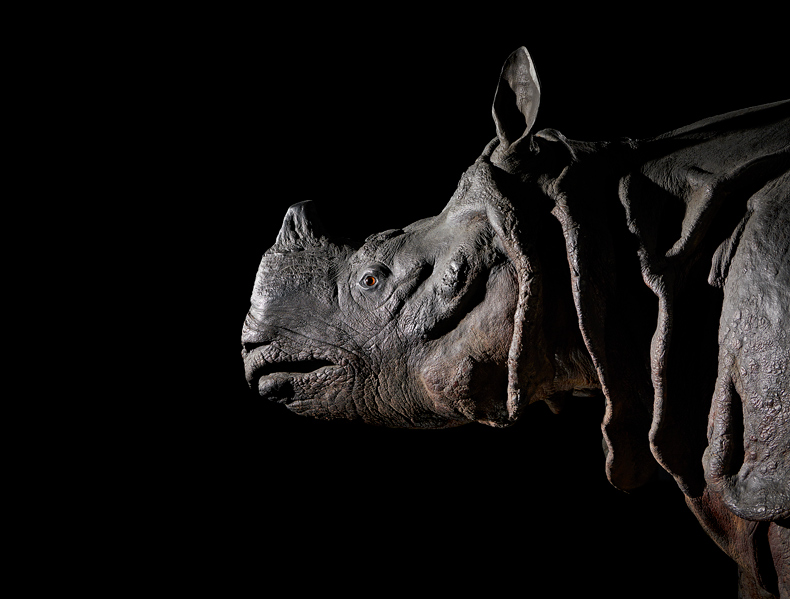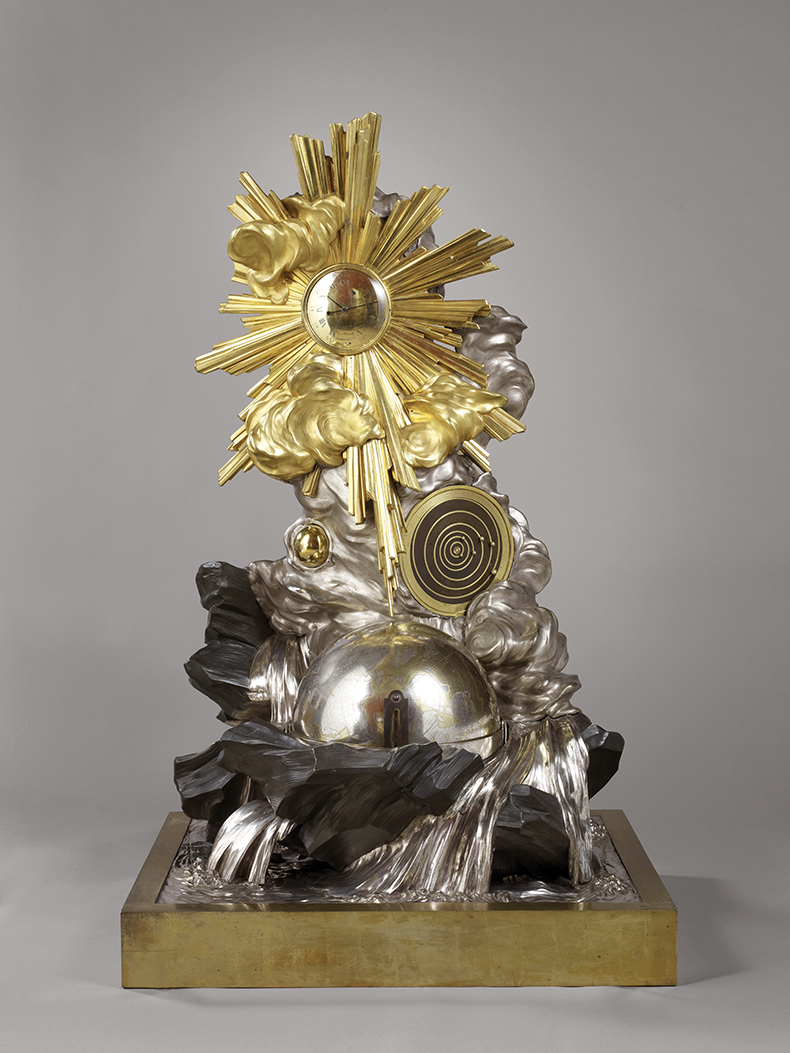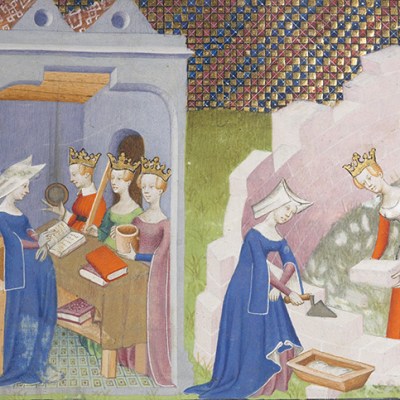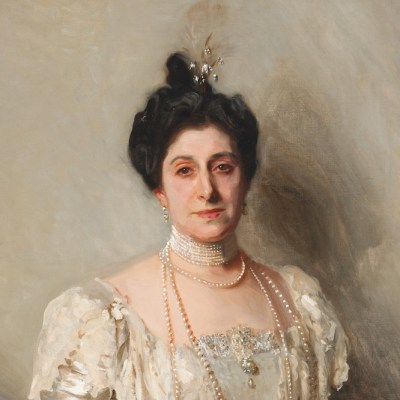From the February 2025 issue of Apollo. Preview and subscribe here.
On a beach somewhere in the late 17th century stands a tortoise. Fastidiously rendered in oils by the Flemish painter Nicasius Bernaerts, the creature stares out with chelonian hauteur as a group of fishermen get on with their labours. But rising from the waters in the distance we can clearly discern that stock figure from legend, a sea-serpent. Once populous in the annoyingly empty expanses of maritime cartography, by the 1660s these creatures were somewhat endangered. In shades of aqua and white, this one seems to blend into the surrounding waves, becoming faint, insubstantial, almost transparent. It is as if, faced with the slow march of empiricism, the monster is fading from existence.
The painting – one of several dozen commissioned from Bernaerts by Louis XIV to document his royal menagerie – embodies the curious and often entertaining juxtapositions at the heart of this exhibition. Based on a show originally staged at Versailles in 2010–11, it documents the role played by natural philosophy (what we would now term science) at the French court over the course of slightly more than a century. It begins in 1666 with the establishment of the Académie Royale des Sciences. This organisation pooled some of the finest minds from across Europe, eminent in fields from anatomy to astronomy, depicted in a vast group portrait by Henri Testelin (which is, regrettably, on display only as a slide projection). Many of their studies were of clear strategic importance to the crown (the Dutch horologer Christiaan Huygens’s development of the pendulum clock, for example, was an early effort to resolve the problem of accurate timekeeping at sea), so the Académie represented an early example of state-sponsored scientific research. And in France at that time, the state was synonymous with the person of the king – ‘l’état, c’est moi,’ after all.
Optical microscope (c. 1750), Claude-Siméon Passemant, Jacques Caffieri and Philippe Caffieri. Photo: © Christophe Fouin/Château de Versailles, Dist. RMN

While the Sun King was monarch of all he surveyed, he employed experts to do the actual surveying for him – the landscape architect André Le Nôtre reworked the palace grounds according to the latest theories of optics and geometry, while a groundbreaking hydraulic device known as the Marly Machine pumped water from the nearby Seine to keep the fountains flowing. The menagerie was housed in a fan-shaped arrangement of mini habitats that could be viewed from a central rotunda, a design anticipating Jeremy Bentham’s Panopticon. Its specimens would have seemed new and alien imports from a vast terra incognita still to be explored and categorised – ranging from that most fashionable of Enlightenment-era fruits, the pineapple, to the hulking centrepiece of the exhibition, a rhinoceros shipped from Bengal in the 1760s for Louis XV. (Taxidermy has since emphasised its barrel-chested physique, attributable to the hide being stretched over a framework of coopers’ hoops.)
Nowadays the aesthetic associated with scientific research is one of clinical minimalism, but it is not without reason that this exhibition is subtitled ‘Science and Splendour’. The dominant mode of expression tends to the ornate – not so much the white heat of technology as the gilt scrollwork of technology. Scientific instruments were crafted as exquisite objects of desire, exemplified by an optical microscope of 1750 that is a mass of rococo acanthus with a barrel clad in vivid, almost glowing shagreen. The highly decorative style reflects the prestige associated with royal patronage, as well as the dominant tastes of the era – and yet to a modern eye there is something joyously out of kilter about the sight of these savants teetering towards modernity in their unsuitable stacked shoes, elaborate brocade and gigantic cuffs.
Indian rhinoceros presented to Louis XV in 1769, stuffed in 1793. Photo: © Science Museum Group

As with Bernaerts’s animal portraits, there are occasions where scientific rigour collides with the urge for an artistic flourish, a relic of older modes of thought. Take, for example, the 1679 map of the moon drawn up by the astronomer Jean-Dominique Cassini after eight years of observations. Its craters and basins are fastidiously detailed, but in the southeastern quadrant the tiny head of a woman juts, siren-like, from a promontory, her hair cascading behind her. Unlike the Martian ‘sphinx’ photographed by NASA in 1976, it is not a rock formation that resembles a human face in a certain light, but more likely a romantic addition by Cassini’s engraver, Jean Patigny, without basis in topography. (Nevertheless it popped up in lunar maps for centuries afterwards.) Similarly, a gigantic clock designed by the instrument maker Claude-Siméon Passemant is ahead of its time in many ways: its harsh geometry could pass for art deco, while the mechanism incorporates a Copernican orrery of the six known planets and a rotating globe. And yet, although state of the art for 1754, this intricate apparatus found its genesis in Bronze Age scripture – it is titled the Clock of the Creation of the World. So much for science.
Presenting an invention at the French court was the 18th-century equivalent of winning a Nobel prize. A line drawing by Sébastien Le Clerc the Elder from c. 1711 depicts a group of pomaded scholars gathered in a corner of the Académie, the chamber lined with shelves holding astrolabes, globes, quadrants and all manner of devices. It resembles the gigantic playroom of a technilogically inclined and rather spoilt child, and in a sense it was – raised in Versailles’ atmosphere of scientific enquiry, Louis XV grew up to prize machinery over more superficial baubles. His private chambers at the palace were adorned with gilded panels depicting the beams and counterweights of crane mechanisms, albeit in a suitably florid rococo style. In turn his heir, Louis XVI, liked nothing more than to take one of his many lathes for a spin and indulge himself in hobbyist engineering.
Clock of the Creation of the World (1754), Claude-Siméon Passemant, François-Thomas Germain and Joseph-Léonard Roques. Photo: © Thierry Ollivier/Musée du Louvre, Dist. RMN-Grand Palais

But for all their instruments of telescopy, the Bourbons were not far-sighted enough to see the logical endpoint of the Enlightenment movement. They did not realise that, to the minds of thinkers who were even more focused on the rule of reason, they were becoming the equivalent of Bernaerts’s sea-serpent. Before the 18th century was over, the French monarchy was, to put it discreetly, rationalised out of existence. The assembled scientific marvels were, as the exhibition’s coda notes tersely, broken up and sold off. Fortunately the combined forces of the Palace of Versailles and the Science Museum have reunited them to be viewed again today.
From the February 2025 issue of Apollo. Preview and subscribe here.



